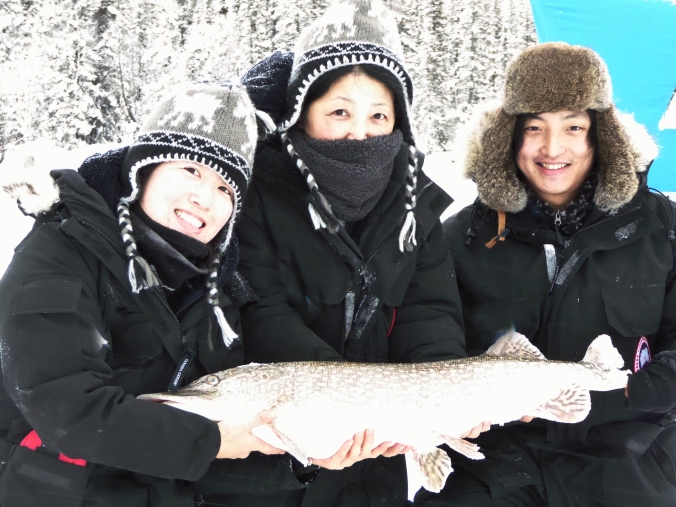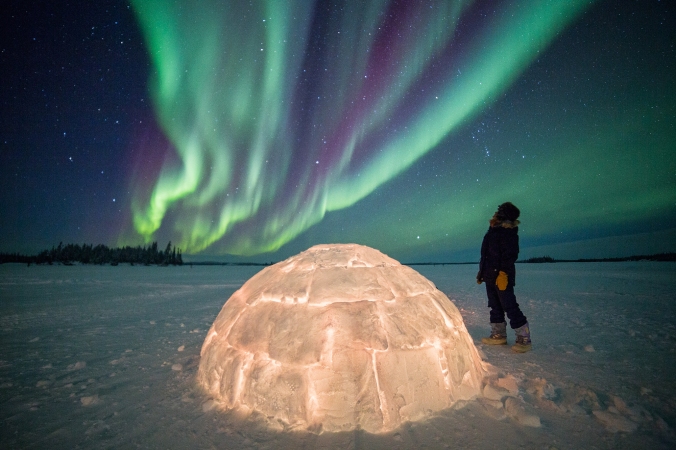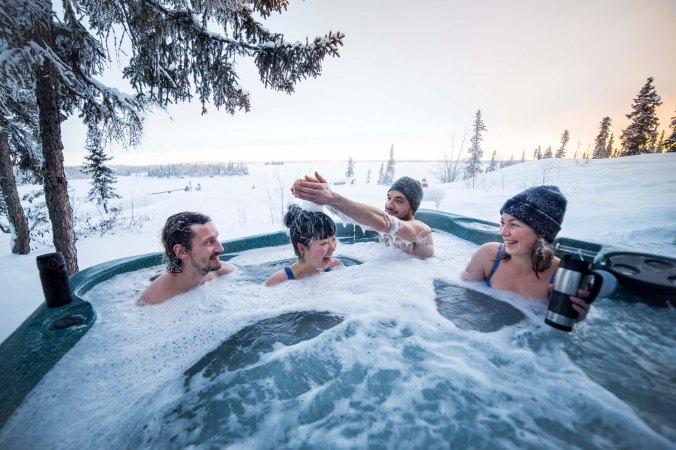First make your hole.
Whether it’s traditional Dene net fishing, or jigging straight down with a rod, single line and hook, you must get through a meter or more of ice to start. Today, this is most easily done with a gas- or battery-powered auger – a kind of giant drill. An alternative is a sharpened steel pole called a needlebar; harder, longer work but easier to carry, if weight/bulk are an issue. But what happened back in the day, before steel was available?

Photo: Hannah Eden
The job was done by chipping away with a chisel made of antler or stone. That hole was just the beginning: up to six of them were needed, depending on the length of the net. Next came a rope made from caribou sinew: tied to a three-meter lengths of spruce, this was slid from hole to hole just below the ice pan. Finally came the precious net: made using the inner bark of willow, rolled between hand and leg to make twine, this would take a whole family weeks to weave. The tools and materials manufactured nowadays might make the job quicker and easier, but in essence the same time honoured principles are used to set a net; it is a time-consuming and cold task demanding great skill by local Dene and Métis fishermen (and sometimes women).
One of the skidoo excursions offered by Blachford Lake Lodge (http:// http://www.blachfordlakelodge.com/packages-reservations/snowmobiling) will take you to learn more about this traditional practice, which has provided a vital source of food for indigenous people for millennia: watch them check the net, and if you like, lend a hand and help land whitefish, trout, pike and, occasionally burbot.
For a more familiar style of fishing, try your luck with a rod and line just a short walk from the lodge. You could be lucky, like first-time fisherwoman, our recent guest Minako Eto. She needed the help of her two grown children to hold the monster northern pike she landed one afternoon last month. Within an hour it had been cleaned, ready for Rafe our chef to serve it up for dinner that evening.

Photo: Michiko Eto







